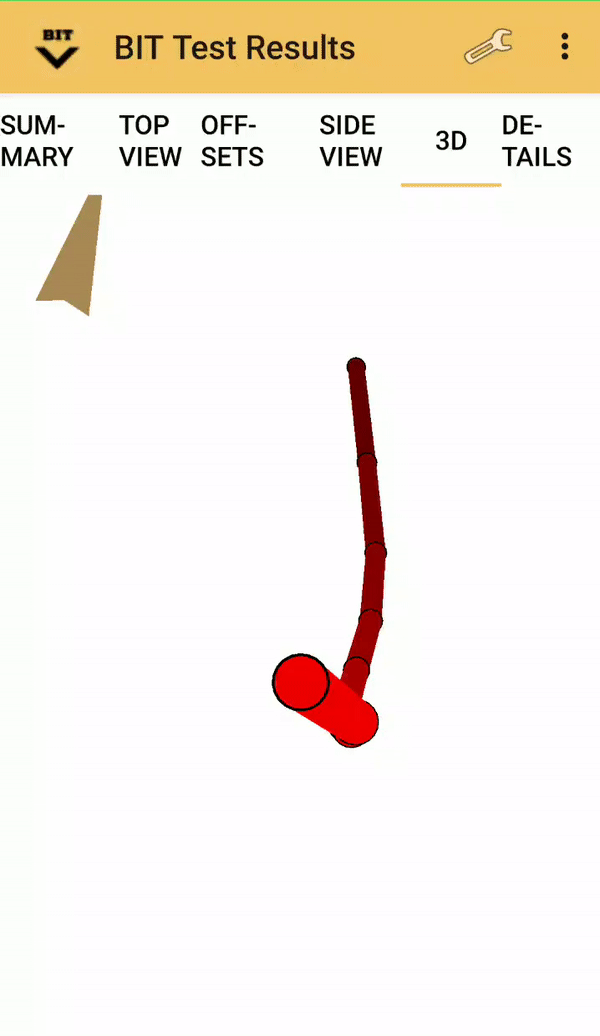












BITBOT
BIT measures the verticality of open boreholes and all kinds of deep foundations: drilled shafts, precast piles, H piles, and even sheet piles.
BIT uses the auger/bucket as the centralizer in the borehole. Eliminating the need for a heavy-to-move system. A special centralizer is used to lower the sensor into a standard access tube of an existing pile.
-
No expensive inclinometer tubes
-
Lightweight 1-person simple operation
-
Works on any diameter
-
ASTM D82332-18 Standard compliant
Applications
Measurement of inclination is required to ensure the deep foundation (vertical or raked) stays within the allowable deviation, typically 2%. More stringent requirements are often specified for diaphragm and secant walls to ensure that there are no gaps in the wall and that the bottom of the wall is in the correct location. Inclination measurement is also utilized in deep wells for various applications.
Easy to Operate Inclination test for Borehole and Pile Foundations, Diaphragm and Secant Walls

Reliable
-
100% QA tests at 16-atmosphere pressure, vibration, and extreme temperature.
-
The BIT sensor can tolerate the harsh conditions of the borehole and drill machine
-
3-year warranty!
-
Rugged connectors, cables & sensors

Easy to Use
-
One operator can handle the lightweight BIT and the inclination test.
-
Easy and Simple to use Android software App.
-
3D borehole visual for augmented reality experience in locating inclined borehole position.

Top Perfromance
-
0.1% accuracy
-
Check the inclination of a 50m borehole in less than 20 minutes
-
Works on any diameter
-
Use simple PVC tubes instead of expensive grooved test tubes
-
Test in metal casing, with magnetic agnostic sensor
-
Weighs under 13Kg




BIT BOT- Technical Specifications
Physical
Housing
Dimensions
Weight
Temperature range
Humidity
Waterproof
Sensor: Rugged metal case
Instrument: Inside Schill cable reel
430mmL x 325mmW x 105mmH (instrument only)
6.0 kg (instrument with 80m cable)
7.0 kg (CSL centrelizer)
13.0kg (Typical shipping)
Operating : -210°C to 50°C
Storage : -40°C to 70°C
90% (non-condensing)
Sensor: IP67, Protection against complete submersion in water
Instrument: IP62, 90% condensation (light rain)
Power
Internal
External
Rechargeable Lithium Ion battery, 7.4 V 500mAh,
(Supports a full day of typical use)
100-240V AC Charger
Standards
ASTM D8232-18
Meets or exceeds
Technical
Wireless
Depth meter
Inclinometer
Gyro
Cables
Bluetooth, 2.4Ghz
Wireless (Zigbee) with internal 1400mAh battery and magnetic charger adapter
MEMS, dual axis, temperature-compensated MEMS
Automatic drift compensation
80m (150m optional) rugged Polyurethane
Performance
Borehole depth Borehole diameter Productivity
Accuracy
5m-140m
Unlimited
10-20 minutes/borehole (Typical)
Inclination: 0.1% (0.07°)
Depth: 0.05m
Output
Reporting
Produced on office PC, including top view of pile axis, a vertical section in the direction of maximum inclination and more
Requirements
Computer (Minimum)
Windows Win7/Win10/Win11. 1024x768 min.
Other Customers Also Purchased

PET Bluetooth
Pile Integrity Tester
PET is used to test the integrity of deep pile foundations. PET Uses the pulse-echo method (PEM) for pile integrity testing (PIT). A pile test starts when the pile top is struck with a hammer, and the PET accelerometer records the reflected waves, which are displayed as a reflectogram.
-
12345678 Example Accessory #4This is example accessory #4 description.
-
12345678 Example Accessory #2This is example accessory #2 description.
Downloads
Documents
Software
Related Content
Leading Customers


















